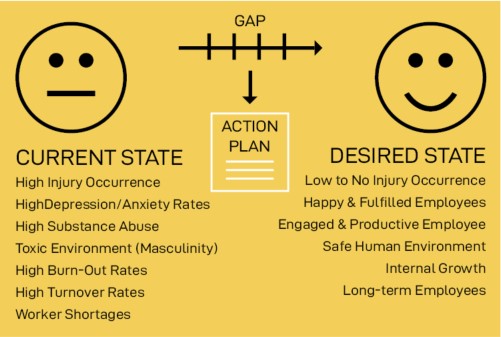Don’t Let Them Burn Out
Keys for increasing employee productivity and retention
“Employee burnout, and mental health issues in general, are real and employers need to address them,” says Sergio Rojas, a human performance coach and founder of A.L.I.V.E Consulting. “There’s no question you need to get the work done, but you also have to care for your people in a sustainable way.”
Burnout leads to decreased productivity, as well as increased illness rates, substance abuse, anger and anxiety, depression, an unwillingness to work, and even suicide. It tends to occur when employees feel prolonged stress associated with too much work, long-term repetitive duties, a lack of communication and support from direct management, and/or unreasonable time pressures.
Avoiding Burnout and Boosting Morale
Presenter:
Sergio Rojas, ALIVE Consulting
Moderator:
Tim Noonan, Cascade Manufacturing
The past 18 months have produced periods of extreme demand for the component manufacturing industry, which may have fostered an environment in which one or more of these stress factors impacted companies’ workforce, causing production and design efficiency to lag and employee turnover to increase. Again, the work needs to get done, so what is an employer to do?
“The first step is to recognize this is a people business, and there are simple ways to identify those in your workplace who are at risk,” says Sergio. “Recognizing that risk and taking proactive steps to address it will help with long-term productivity, retention, and safety.”
Tim Noonan, president of Cascade Manufacturing, says, “It’s important to help your management understand and appreciate that every person has their own background story and faces pressures both at work and away from work. The more you can dive into who they are, the better able you are to understand the external and internal factors affecting their ability to do their jobs.”
Sergio suggests this approach leads to what he calls a positive productivity culture. “It’s where people feel aligned to the values of the organization; they’re communicated to in a clear and respectful manner; they’re motivated to produce at high levels; and they feel safe to express ideas, concerns, and emotion,” he explains. “To achieve this, you have to address both the employees’ outer state, their physical health, and their inner state, their mental health.”
An effective way to accomplish this is through modeling. “Everyone, whether consciously or subconsciously, follows the leader. If management can’t find a way to avoid feeling burned out, how can your employees?” asks Sergio. “Conversely, if management can exhibit what self-care looks like and how to effectively deal with high levels of stress, employees can follow their lead.”
 Having an effective mentorship program can also help. “Pairing your employees up with leaders helps the leaders gather information about where employees are at, opens lines of communication to discuss how stress is affecting them, and again, provides an opportunity to model how to deal with stress in a productive way,” says Sergio.
Having an effective mentorship program can also help. “Pairing your employees up with leaders helps the leaders gather information about where employees are at, opens lines of communication to discuss how stress is affecting them, and again, provides an opportunity to model how to deal with stress in a productive way,” says Sergio.
Employers can get ahead of burnout and other mental health issues by instilling a positive productivity culture from day one. During the interview and onboarding process, Sergio encourages every employer to discuss mental health, self-care and wellness, safety, and support resources with every person they bring in the door.
“Employers will see real benefits if they prioritize self-care and wellness,” Sergio continues. “It improves physical and emotional wellbeing and optimizes an individual’s energy, focus, rest, and resilience.” These are the qualities that lead to a more efficient and productive workforce, as well as employees who are more likely to reliably show up for work on time.
“I believe we are all doing the obvious things as employers. We’re all facing the same labor challenges, so we have increased wages and enhanced our benefits,” Tim goes on to say. “But these things go only so far because all the competing employers are doing the same thing. You must differentiate yourself and make your company a place where everyone wants to work.”
Today, companies need to invest in a culture in which employees feel they not only understand and are aligned with the company’s goals, but also that their mental and physical well-being isn’t ignored. “That investment yields a very real return,” says Sergio. “There was a ten-year study with 200 companies participating. The companies that implemented attributes associated with a positive productivity culture experienced 756% profit growth over the companies that did not.”
